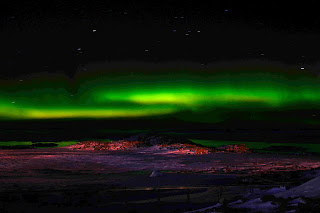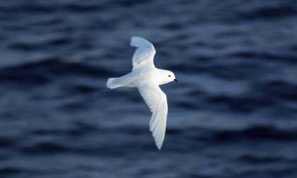Mid-winter

This is the place where I live, well for a year!
Snow, this may sound crazy but the amount of snow here is a lot more than I had expected. This and how the amount of snow affects what & when things can be done. The last time I came to Antarctica it was to Mawson. Mawson is further South than Casey and very rarely had snow falls. Yes we had snow, mostly coming at us sideways in the form of blizzards but most of it was blown away. Here at Casey we have a lot of snow, it is not unusual for me now to walk out in the morning in soft snow above my knees. This may sound great but it can make moving equipment & working around the station difficult. Also the novelty of shoveling snow wears off quickly. In saying that the next day it could be a high wind day and most of the snow can be blown away. The heavy snow started the afternoon of the sailing of the summer personnel from Casey back in March and since that heavy snow fall there is still things that the snow has prevented us from being able to do. The biggest problem has been the movement of large equipment to & from the wharf area; this has meant that sea containers that we would like to have removed from the station area have had to remain, causing storage problems as the location of things like containers greatly impacts on the station as each container can cause blizz tails that then become a problem for movement around station.
Best thing?
For me it would be the time spent at the nearby Wilkes hut (Wilkes Hilton as people call it). This is by far the best hut that I’ve stayed in Antarctica. The primary reason for this is that it is a spacious hut with a log fire. The Wilkes hut is situated on the site of the old Wilkes station so the area has a lot of interesting artifacts to be seen and the view of the current Casey station is great from Wilkes.
Worst thing?
One of the main draw cards for me to Antarctica is to take photos and by far my favorite subject is wildlife. Here at Casey there is almost no wildlife to be seen and with the unreliable sea ice here it is difficult to get out to any of the Weddal seals or any of the penguins in this area. Also the large amount of cloud cover we have at Casey has meant that the chance of seeing a quality aurora is greatly reduced compared to the other two continental stations. Since arriving at Casey I’ve only seen one notable aurora.
Thing I’d like to happen before I leave?
For the sea ice to become considerably more reliable so that one of my colleges & I to be able to ski on the sea ice over to Browning hut which lies west of the station and is currently a long trip inland to get to in a Hagglunds. The early return of the wildlife in the spring, to enable plenty of viewing & picture taking is high on my wish list. And lastly that all of us nineteen gentlemen currently at Casey continue the time without serious disagreement & that I come away with good friends.
With less than two weeks to mid-winters here in Antarctica the days are becoming very short with now only about three hours between sunrise & sunset, you could say my days are very sort. The truth is that you get used to carrying a torch with you most of the time. It has been asked how people manage with the reduced day light, for myself I find keeping to a normal sleep & eating pattern helps the body & mind to keep the body clock in sync. If you don’t do this it would be easy to sleep a lot more, kind of like hibernation but this would not get much work done.
We have still been able to get out and about, although the need to travel in the dark is real. Last week four of us went to the nearby hut at the old Wilkes station about ten Kilometers from Casey. As this hut is part of an old station it is by far the largest of the field huts in this area & boasts a great wood burner which makes it also the coziest of huts to stay in. This is good news when this week’s temperature has been down to -29 Celsius & the wind gusted up at 106 knots. Luckily the days spent at Wilkes were great & my three fellow trippers ran back to the station while I followed in the Nodwell (Truck on tracks). Someone had to do the driving.
We have still been able to get out and about, although the need to travel in the dark is real. Last week four of us went to the nearby hut at the old Wilkes station about ten Kilometers from Casey. As this hut is part of an old station it is by far the largest of the field huts in this area & boasts a great wood burner which makes it also the coziest of huts to stay in. This is good news when this week’s temperature has been down to -29 Celsius & the wind gusted up at 106 knots. Luckily the days spent at Wilkes were great & my three fellow trippers ran back to the station while I followed in the Nodwell (Truck on tracks). Someone had to do the driving.
The Wilkes to Casey runners, I think it was a good run almost ten Kilometers in 57 minutes.
Something a little different. Some shots of ice on the window in the hut. I'd like to say these were my idea but Chris the chippie is the one with the eye for this sort of thing.
This is the view from my bedroom window last week to the old transmitter hut behind the station.
A friend of mine asked me these questions of coming to Casey & these are my responses.
Biggest surprise?
Biggest surprise?
Snow, this may sound crazy but the amount of snow here is a lot more than I had expected. This and how the amount of snow affects what & when things can be done. The last time I came to Antarctica it was to Mawson. Mawson is further South than Casey and very rarely had snow falls. Yes we had snow, mostly coming at us sideways in the form of blizzards but most of it was blown away. Here at Casey we have a lot of snow, it is not unusual for me now to walk out in the morning in soft snow above my knees. This may sound great but it can make moving equipment & working around the station difficult. Also the novelty of shoveling snow wears off quickly. In saying that the next day it could be a high wind day and most of the snow can be blown away. The heavy snow started the afternoon of the sailing of the summer personnel from Casey back in March and since that heavy snow fall there is still things that the snow has prevented us from being able to do. The biggest problem has been the movement of large equipment to & from the wharf area; this has meant that sea containers that we would like to have removed from the station area have had to remain, causing storage problems as the location of things like containers greatly impacts on the station as each container can cause blizz tails that then become a problem for movement around station.
Best thing?
For me it would be the time spent at the nearby Wilkes hut (Wilkes Hilton as people call it). This is by far the best hut that I’ve stayed in Antarctica. The primary reason for this is that it is a spacious hut with a log fire. The Wilkes hut is situated on the site of the old Wilkes station so the area has a lot of interesting artifacts to be seen and the view of the current Casey station is great from Wilkes.
Worst thing?
One of the main draw cards for me to Antarctica is to take photos and by far my favorite subject is wildlife. Here at Casey there is almost no wildlife to be seen and with the unreliable sea ice here it is difficult to get out to any of the Weddal seals or any of the penguins in this area. Also the large amount of cloud cover we have at Casey has meant that the chance of seeing a quality aurora is greatly reduced compared to the other two continental stations. Since arriving at Casey I’ve only seen one notable aurora.
Thing I’d like to happen before I leave?
For the sea ice to become considerably more reliable so that one of my colleges & I to be able to ski on the sea ice over to Browning hut which lies west of the station and is currently a long trip inland to get to in a Hagglunds. The early return of the wildlife in the spring, to enable plenty of viewing & picture taking is high on my wish list. And lastly that all of us nineteen gentlemen currently at Casey continue the time without serious disagreement & that I come away with good friends.






























